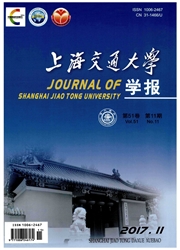

 中文摘要:
中文摘要:
采用地铁列车移动轮载、激振力函数法和数定分析法计算得到上海地铁列车荷载时程,考虑管片-土体及管片间的接触特性和纵向螺栓的连接作用,建立道床-管片-土体系统的三维动力有限元模型,分析比较了3种计算方法所得隧道结构动力响应的差异.研究表明:3种方法所得道床和土体单元动应力以及道床点位移时程曲线基本一致;基于实测数据的数定分析法适用于地铁列车荷载引起的环境振动评价,移动轮载和激振力函数法均会导致加速度频谱分布产生误差.
 英文摘要:
英文摘要:
Moving axle loads, excitation force function and deterministic formulas for vibration acceleration of track were employed to calculate the metro train load time-history in Shanghai. Considering the interface characteristics between the segments and the surrounding soils as well as other segments and the effect of longitudinal joint bolts, a three-dimensional dynamic finite element model of track bed-segment-soil system was constructed to compare the dynamic responses on shield tunnel structures. The results show that dy- namic stresses time-history curves of track bed and soil elements are basically the same for the three meth- ods. Due to the differences of acceleration frequency spectrum caused by moving axle loads and excitation force function methods, the evaluation of metro-induced environmental vibrations should be based on the measured data of metro train loading.
 同期刊论文项目
同期刊论文项目
 同项目期刊论文
同项目期刊论文
 Prediction for Long-Term Deformation of Existing Tunnels Induced by Underground Excavation in Shangh
Prediction for Long-Term Deformation of Existing Tunnels Induced by Underground Excavation in Shangh 期刊信息
期刊信息
